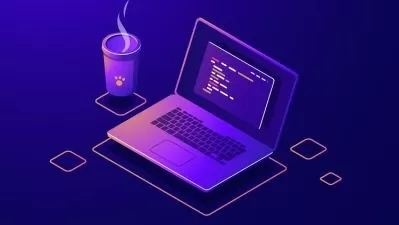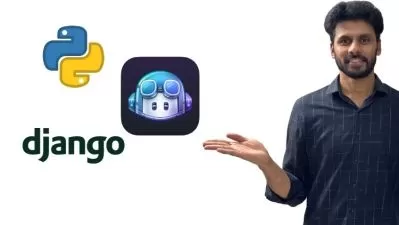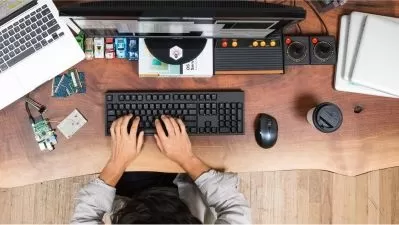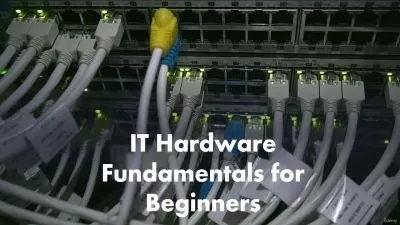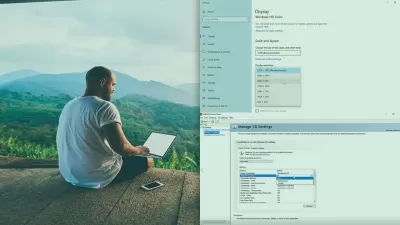Hardware Interfacing Using Python
Salim Khan
1:52:03
Description
Python for Real world applications
What You'll Learn?
- Learn about the Basics of Data Acquisition
- Integrating Python with LabVIEW
- Digital Signal Generation and Acquisition
- Analog Signal Generation and Acquisition
Who is this for?
What You Need to Know?
More details
DescriptionWelcome to the "Hardware Interfacing Using Python" course! This course introduces you to the fundamentals of interfacing with hardware devices using Python. In today's world, where technology is ubiquitous, connecting and interacting with hardware components is a valuable skill for many applications, including robotics, Internet of Things (IoT) devices, and automation systems.
Hardware interfacing refers to the process of connecting and communicating with hardware devices, such as sensors, actuators, motors, and other electronic components, using a software interface. Python is a popular programming language that provides robust support for hardware interfacing through various libraries and modules.
Advantages of using Python for hardware interfacing:
Simplicity and ease of use: Python has a clean and readable syntax, making it accessible for beginners and experienced developers alike. It allows you to write concise and expressive code, reducing the complexity of hardware interfacing tasks.
Cross-platform compatibility: Python is a versatile language that runs on various platforms, including Windows, macOS, Linux, and embedded systems like Raspberry Pi and Arduino. This cross-platform compatibility allows you to interface with hardware devices regardless of the operating system.
Extensive library support: Python offers a wide range of libraries and modules specifically designed for hardware interfacing. These libraries provide high-level abstractions, making it easier to interact with sensors, actuators, and other devices. They handle low-level details such as data transmission protocols, allowing you to focus on the higher-level logic of your application.
Integration with other technologies: Python seamlessly integrates with other technologies commonly used in the hardware domain, such as data analysis, machine learning, and web frameworks. This allows you to leverage Python's extensive ecosystem for data processing, analysis, visualization, and control of hardware devices.
                                           Hardware + Python = The Future
If you wish to interface quickly with Python functions, this course is for you.
To create applications with more effective interfaces, you can experiment with different design templates, frameworks, and OOP structures in the LabVIEW environment.
You can also employ this incredible team to perform numerous assignments for your academic studies, thesis, and projects!
Based on the success of previous students in the course and their final grades, you can rest assured that you will acquire the knowledge necessary to begin using Python immediately after finishing the course.
Who this course is for:
- Students, Industry Persons
Welcome to the "Hardware Interfacing Using Python" course! This course introduces you to the fundamentals of interfacing with hardware devices using Python. In today's world, where technology is ubiquitous, connecting and interacting with hardware components is a valuable skill for many applications, including robotics, Internet of Things (IoT) devices, and automation systems.
Hardware interfacing refers to the process of connecting and communicating with hardware devices, such as sensors, actuators, motors, and other electronic components, using a software interface. Python is a popular programming language that provides robust support for hardware interfacing through various libraries and modules.
Advantages of using Python for hardware interfacing:
Simplicity and ease of use: Python has a clean and readable syntax, making it accessible for beginners and experienced developers alike. It allows you to write concise and expressive code, reducing the complexity of hardware interfacing tasks.
Cross-platform compatibility: Python is a versatile language that runs on various platforms, including Windows, macOS, Linux, and embedded systems like Raspberry Pi and Arduino. This cross-platform compatibility allows you to interface with hardware devices regardless of the operating system.
Extensive library support: Python offers a wide range of libraries and modules specifically designed for hardware interfacing. These libraries provide high-level abstractions, making it easier to interact with sensors, actuators, and other devices. They handle low-level details such as data transmission protocols, allowing you to focus on the higher-level logic of your application.
Integration with other technologies: Python seamlessly integrates with other technologies commonly used in the hardware domain, such as data analysis, machine learning, and web frameworks. This allows you to leverage Python's extensive ecosystem for data processing, analysis, visualization, and control of hardware devices.
                                           Hardware + Python = The Future
If you wish to interface quickly with Python functions, this course is for you.
To create applications with more effective interfaces, you can experiment with different design templates, frameworks, and OOP structures in the LabVIEW environment.
You can also employ this incredible team to perform numerous assignments for your academic studies, thesis, and projects!
Based on the success of previous students in the course and their final grades, you can rest assured that you will acquire the knowledge necessary to begin using Python immediately after finishing the course.
Who this course is for:
- Students, Industry Persons
User Reviews
Rating
Salim Khan
Instructor's Courses
Udemy
View courses Udemy- language english
- Training sessions 18
- duration 1:52:03
- Release Date 2023/08/01






